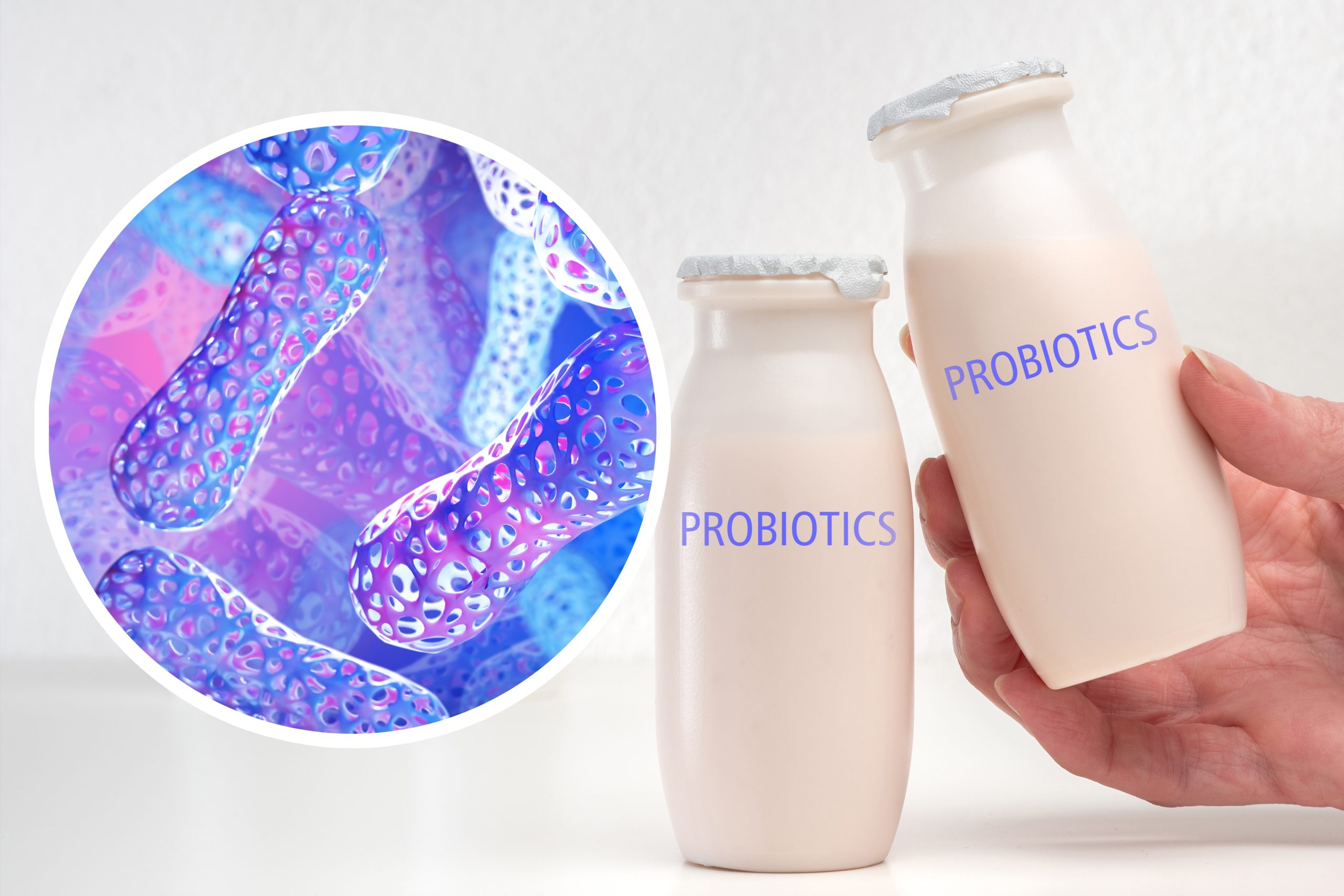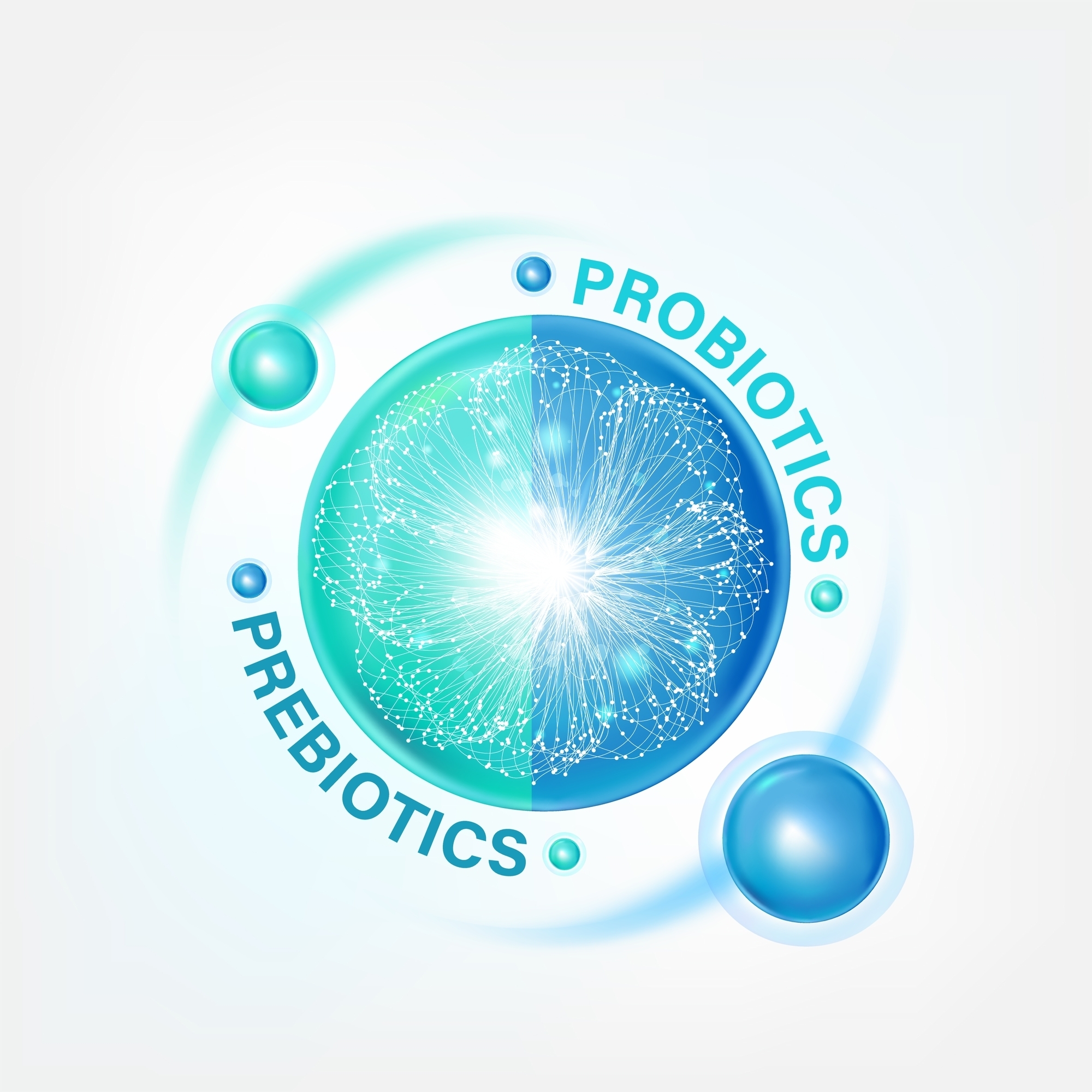There’s a popular quote by Hippocrates: “All diseases begin in the gut.” It may sound like an exaggeration, but it is quite true. Trillions of microorganisms reside in our gut, creating a microbiome known as the gut microbiome. Some of these are ‘rogue’ while some are ‘good’; and together, they are responsible in many ways for our health.1 When the rogue or bad microbes in the gut are far higher in numbers than the good ones, it causes ‘dysbiosis’2
Every individual has a unique gut microbiome depending on the person’s genetics, environment, food consumed, stress, and antibiotic consumption.3
Let us learn more about these good bacteria and what helps them grow in our gut.
What Are Probiotics?
Contrary to the notion that microbes are harmful, not all bacteria are “bad.” While harmful bacteria can cause infections and illnesses, “good bacteria” play an essential role in maintaining health, especially gut health. Examples of beneficial gut microbes are Lactobacillus and Bifidobacterium, as well as certain yeast strains known for their endless health-promoting properties.4,5 Every individual has a unique gut microbiome depending on the person’s genetics, environment, food consumed, stress, and antibiotic consumption.
One can get good bacteria from yoghurt, fermented foods like kimchi or products containing the live strains of these good bacteria, known as probiotics.6 These probiotic bacteria begin to populate the gut, adding to the ones already living there, thus preventing or treating dysbiosis and improving health in many ways. They help improve the immune system and heart health and have been recently found to have numerous more health benefits.5
What Are Prebiotics?
Prebiotics are dietary fibres that act as “food” for probiotics.7 They help the growth of the good bacteria in the gut. However, they are not the same as fibres, generally understood as roughage. Prebiotics are found in foods such as garlic, onions, bananas, asparagus, and whole grains.7,8 They are not digested but are broken down and fermented by good bacteria, i.e. the probiotics.
Prebiotics contribute to gut health by:7,9
- Encouraging the growth of beneficial bacteria.
- Improving the production of short-chain fatty acids (SCFAs), which improve gut lining integrity.
- Helping regulate bowel movements and reduce inflammation.
- Produce neurotransmitters that control mood and other processes.
- Stimulate the production of hormones that influence appetite.
- Help absorption of calcium& phosphorus and mineralisation of bones
Consuming between 5g to 20g of prebiotic fibre a day is recommended for better gut health.10
What Is the Difference Between Prebiotics and Probiotics?
The difference between prebiotics and probiotics is based on their function and nature:
Probiotics: These are the live beneficial bacteria that colonise the gut.
Prebiotics: These are non-digestible fibres that nourish probiotics and help them thrive.
Prebiotics vs Probiotics
While probiotics introduce beneficial bacteria into your gut, prebiotics provide the nourishment they need to grow and multiply. Thus, consuming both will provide the maximum benefits. However, even consuming prebiotics alone will help the growth of one’s good bacteria in the gut, offering health benefits.
Thus, when the question “prebiotics vs probiotics” pops up, there really isn’t any competition.
So, the next time you plan your meals, consider prebiotics and probiotics for better health!

References:
- Guinane CM, Cotter PD. Role of the gut microbiota in health and chronic gastrointestinal disease: understanding a hidden metabolic organ. Therap Adv Gastroenterol. 2013;6(4):295-308. doi:10.1177/1756283X13482996
- DeGruttola AK, Low D, Mizoguchi A, Mizoguchi E. Current Understanding of Dysbiosis in Disease in Human and Animal Models. Inflamm Bowel Dis. 2016;22(5):1137-1150. doi:10.1097/MIB.0000000000000750
- The Microbiome. The Nutrition Source. Published August 16, 2017. https://nutritionsource.hsph.harvard.edu/microbiome/
- Markowiak P, Śliżewska K. Effects of Probiotics, Prebiotics, and Synbiotics on Human Health. Nutrients. 2017;9(9):1021. Published 2017 Sep 15. doi:10.3390/nu9091021
- de Vos WM, Tilg H, Van Hul M, Cani PD. Gut microbiome and health: mechanistic insights. Gut. 2022;71(5):1020-1032. doi:10.1136/gutjnl-2021-326789
- Syngai GG, Gopi R, Bharali R, Dey S, Lakshmanan GM, Ahmed G. Probiotics – the versatile functional food ingredients. J Food Sci Technol. 2016;53(2):921-933. doi:10.1007/s13197-015-2011-0
- Davani-Davari D, Negahdaripour M, Karimzadeh I, et al. Prebiotics: Definition, Types, Sources, Mechanisms, and Clinical Applications. Foods. 2019;8(3):92. Published 2019 Mar 9. doi:10.3390/foods8030092
- Oluwatobi Victoria Obayomi, Abiola Folakemi Olaniran, Stephen Olugbemiga Owa. Unveiling the role of functional foods with emphasis on prebiotics and probiotics in human health: A review. Journal of functional foods. 2024;119:106337-106337. doi:https://doi.org/10.1016/j.jff.2024.106337
- What Are Prebiotics and What Do They Do? Cleveland Clinic. Published March 14, 2022. https://health.clevelandclinic.org/what-are-prebiotics
- Gibson GR, Hutkins R, Sanders ME, Prescott SL, Reimer RA, Salminen SJ, et al. Expert consensus document: The International Scientific Association for Probiotics and Prebiotics (ISAPP) consensus statement on the definition and scope of prebiotics. Nat Rev Gastroenterol Hepatol 2017. https://doi.org/10.1038/nrgastro.2017.75.

